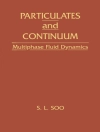Advanced Finite Element Method in Structural Engineering systematically introduces the research work on the Finite Element Method (FEM), which was completed by Prof. Yu-qiu Long and his research group in the past 25 years. Seven original theoretical achievements – for instance, the Generalized Conforming Element method, to name one - and their applications in the fields of structural engineering and computational mechanics are discussed in detail. The book also shows the new strategies for avoiding five difficulties that exist in traditional FEM (shear-locking problem of thick plate elements; sensitivity problem to mesh distortion; non-convergence problem of non-conforming elements; accuracy loss problem of stress solutions by displacement-based elements; stress singular point problem) by utilizing foregoing achievements.
Inhoudsopgave
— The Evolutive Finite Element Method.- — The Evolutive Finite Element Method.- Advances in Variational Principles.- The Sub-Region Variational Principles.- Variational Principles with Several Adjustable Parameters.- Advances in finite element method —Generalized conforming elements.- Generalized Conforming Element Theory.- Generalized Conforming Thin Plate Element I—Introduction.- Generalized Conforming Thin Plate Element II—Line-Point and Semi Loof Conforming Schemes.- Generalized Conforming Thin Plate Element III — Perimeter-Point and Least-Square Conforming Schemes.- Generalized Conforming Thick Plate Element.- Generalized Conforming Element for the Analysis of the Laminated Composite Plates.- Generalized Conforming Element for the Analysis of Piezoelectric Laminated Composite Plates.- Generalized Conforming Membrane and Shell Elements.- Other Advances in Finite Element Method.- Sub-Region Mixed Element I — Fundamental Theory and Crack Problem.- Sub-Region Mixed Element II—V-Notch Problem.- Analytical Trial Function Method I — Membrane and Plate Bending Elements.- Analytical Trial Function Method II — Singular Elements with Crack and Notch.- Quadrilateral Area Coordinate Systems, Part I — Theory and Formulae.- Quadrilateral Area Coordinate Systems, Part II — New Tools for Constructing Quadrilateral Elements.- Spline Element I—Analysis of High-Rise Building Structures.- Spline Element II — Analysis of Plate/Shell Structures.- Concluding Remarks.
Over de auteur
Mr. Yu-Qiu Long is Professor in the Department of Civil Engineering at Tsinghua University, and a member of the Chinese Academy of Engineering. His research is mainly in structural mechanics, shell structures, finite element method and variational principles. He has published 21 books and 235 papers, which have been cited more than 2000 times. To date, he has obtained 22 awards, at the national and provincial levels, for his achievements.Dr. Song Cen is Associate Professor in the School of Aerospace at Tsinghua University, a Chinese Association of Computational Mechanics committee member, and a member of the International Association for Computational Mechanics. His research is mainly in computational solid mechanics and structural engineering. He has won several awards for his research work, including the Nationwide Excellent Doctoral Dissertation Award and The Young Researcher Fellowship Award, awarded by the First M.I.T. Conference on Computational Fluid and Solid Mechanics.












